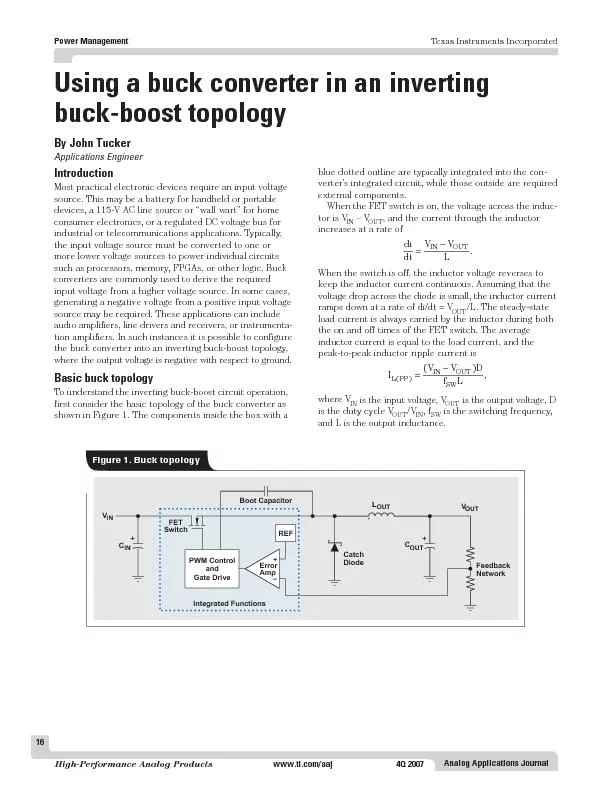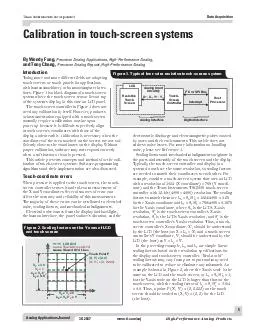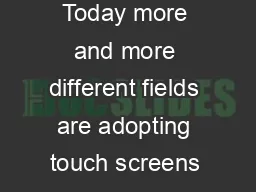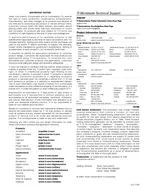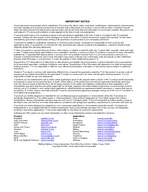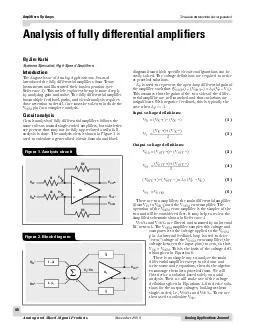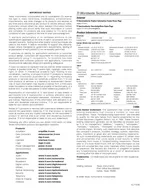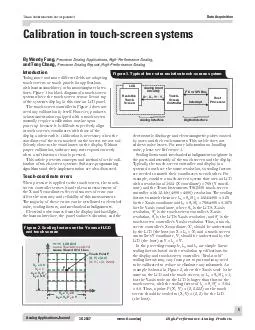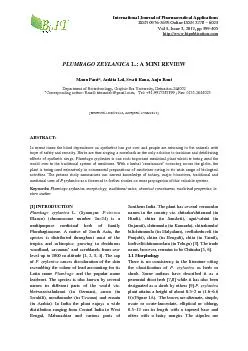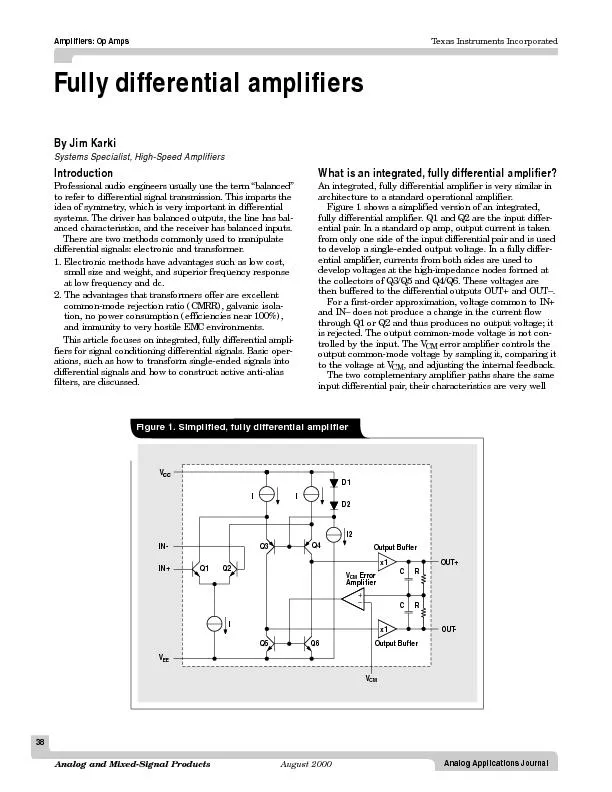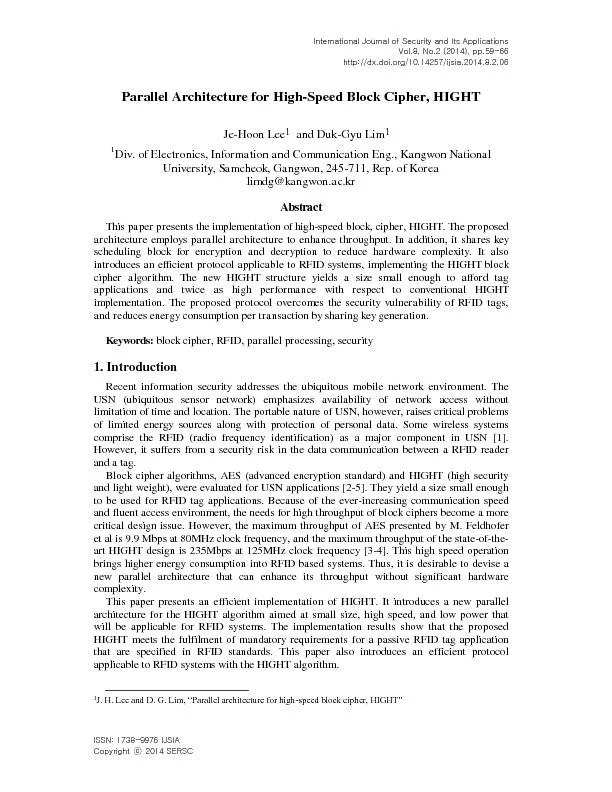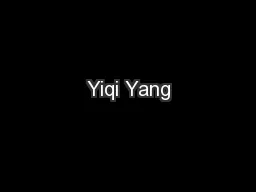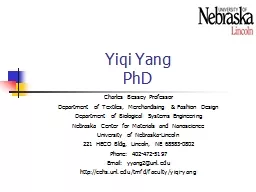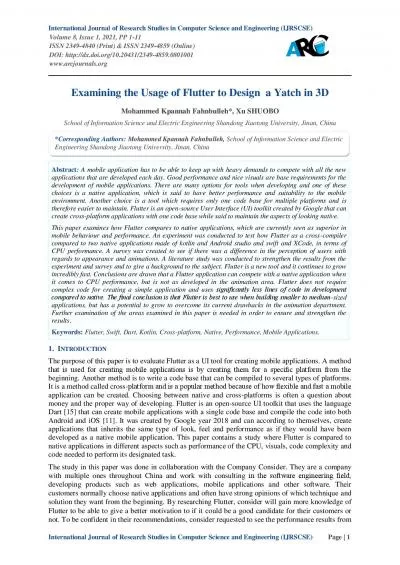PDF-16Analog Applications Journal
Author : cheryl-pisano | Published Date : 2016-05-05
wwwticomaaj4Q 2007industrial or telecommunications applications Typicallysuch as processors memory FPGAs or other logic Buck VVDLPPINOUT INOUT Texas Instruments
Presentation Embed Code
Download Presentation
Download Presentation The PPT/PDF document "16Analog Applications Journal" is the property of its rightful owner. Permission is granted to download and print the materials on this website for personal, non-commercial use only, and to display it on your personal computer provided you do not modify the materials and that you retain all copyright notices contained in the materials. By downloading content from our website, you accept the terms of this agreement.
16Analog Applications Journal: Transcript
wwwticomaaj4Q 2007industrial or telecommunications applications Typicallysuch as processors memory FPGAs or other logic Buck VVDLPPINOUT INOUT Texas Instruments Incorporated IntegratedFunctio. The advantages are inherent in the architecture External commonmode noise sources from the power supply and other circuitry are rejected by the differen tial nature of the architecture Evenorder harmonics tend to cancel The required voltage swing Figure 1 is a block diagram of a touchscreen system where the touch screen sensor lies on top of the systems display in this case an LCD panel The touchscreen controller in Figure 1 does not need any calibration by itself However products or instrum Figure 1 is a block diagram of a touchscreen system where the touch screen sensor lies on top of the systems display in this case an LCD panel The touchscreen controller in Figure 1 does not need any calibration by itself However products or instrum The ADC is often from a competitor Answering this question is a challenging taskand there is no absolute answer only a list of gray areas and tradeoffs It would be handy to have a table with ADCs on one side and recommended op amps on the other But ticomaaj 2Q 2009 Analog Applications Journal HighPerformance Analog Products wwwticomaaj 2Q 2009 Texas Instruments Incorporated 12 Power Management Designing a linear LiIon battery charger with powerpath control In theory a linear battery charger wit This article explores the topic more deeply by analyzing gain and noise The fully differential amplifier has multiple feedback paths and circuit analysis requires close attention to detail Care must be taken to include the OCM pin for a complete ana They have proven to be somewhat problematic from the standpoints of center fre quency f tuning stability and repeatability The advent of highspeed amplifiers opens the possi bility of higherspeed notch filtersbut are they actually producible This a Figure 1 is a block diagram of a touchscreen system where the touch screen sensor lies on top of the systems display in this case an LCD panel The touchscreen controller in Figure 1 does not need any calibration by itself However products or instrum ISSN 0976-2639.Online ISSN 2278 Texas Instruments Incorporatedidea of symmetry, which is very important in differentialanced characteristics, and the receiver has balanced inputs.differential signals: electronic and transformer.1.El I Security and Its Applications Vol. 8 , No. 2 (201 4 ), pp. 5 9 - 66 http://dx.d oi.org/10.14257/ij sia .201 4 . 8 . 2 .0 6 ISSN: 1738 - 9976 IJ SIA Copyright ⓒ 201 4 SERSC Parallel Architect PhD. Charles Bessey Professor. Department of Textiles, Merchandising & Fashion Design. Department of Biological Systems Engineering. Nebraska Center for Materials and Nanoscience. University of Nebraska-Lincoln. Department of Textiles, Merchandising & Fashion Design. Department of Biological Systems Engineering. Nebraska Center for Materials and Nanoscience. University of Nebraska-Lincoln. 221 HECO Bldg, Lincoln, NE 68583-0802. Volume 8 , Issue 1 , 202 1 , PP 1 - 11 ISSN 2349 - 4840 (Print) & ISSN 2349 - 4859 (Online) DOI: http:// dx.doi.or g/10.20431/2349 - 4859.0 8 0 1 001 www.arcjournals.org International Journal of R
Download Document
Here is the link to download the presentation.
"16Analog Applications Journal"The content belongs to its owner. You may download and print it for personal use, without modification, and keep all copyright notices. By downloading, you agree to these terms.
Related Documents

